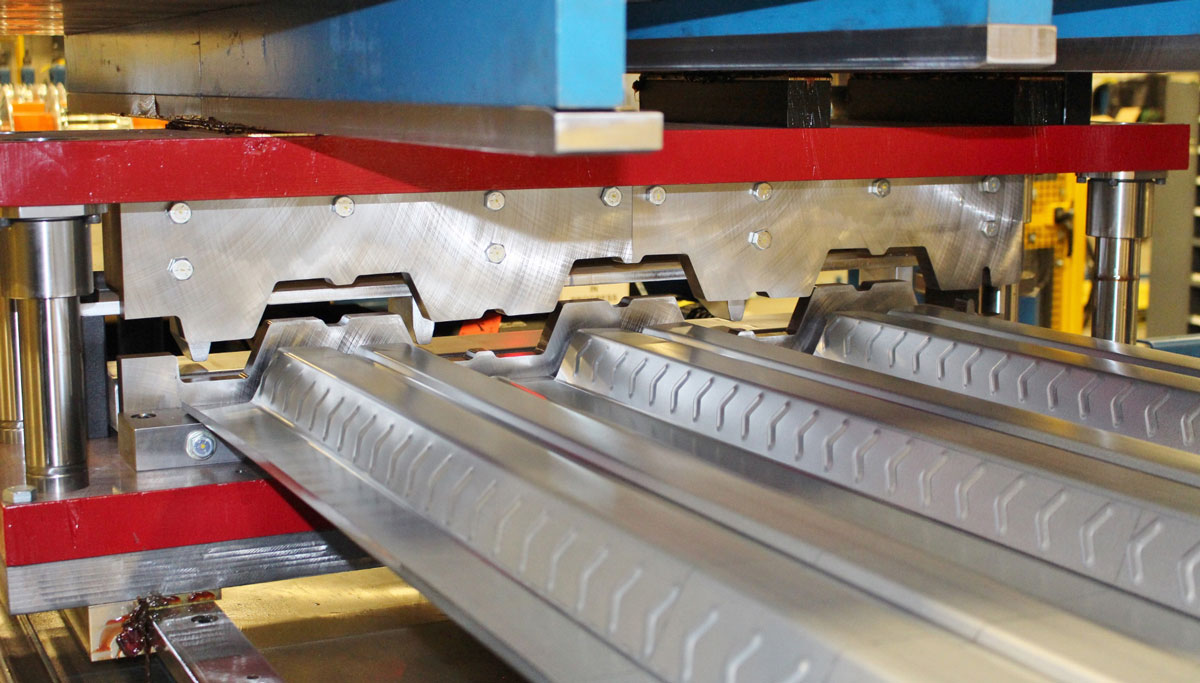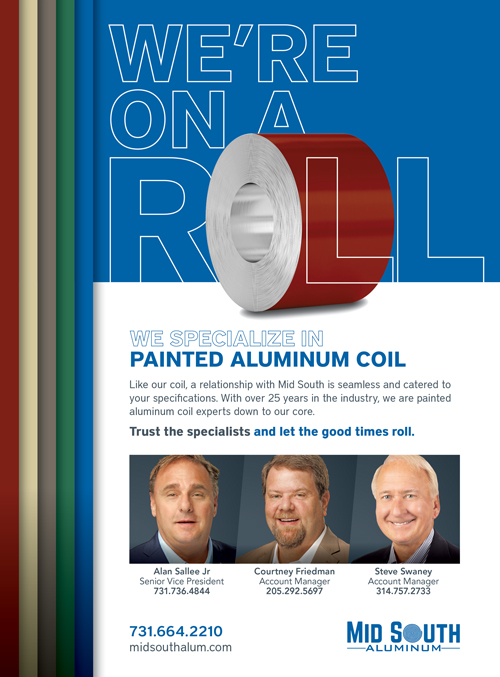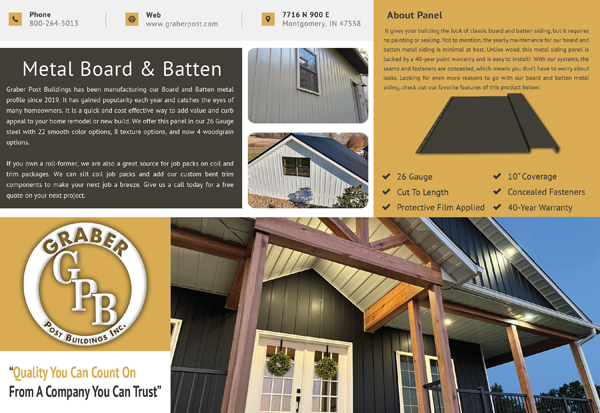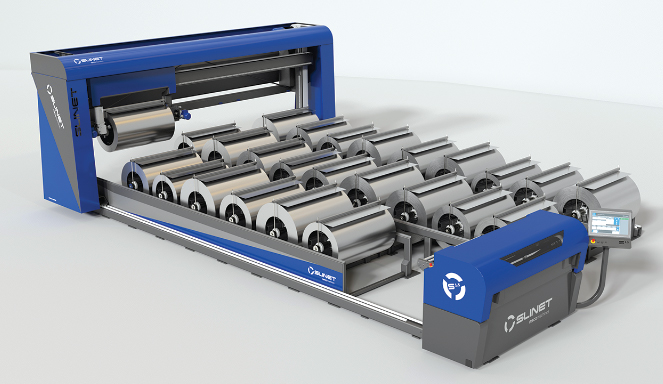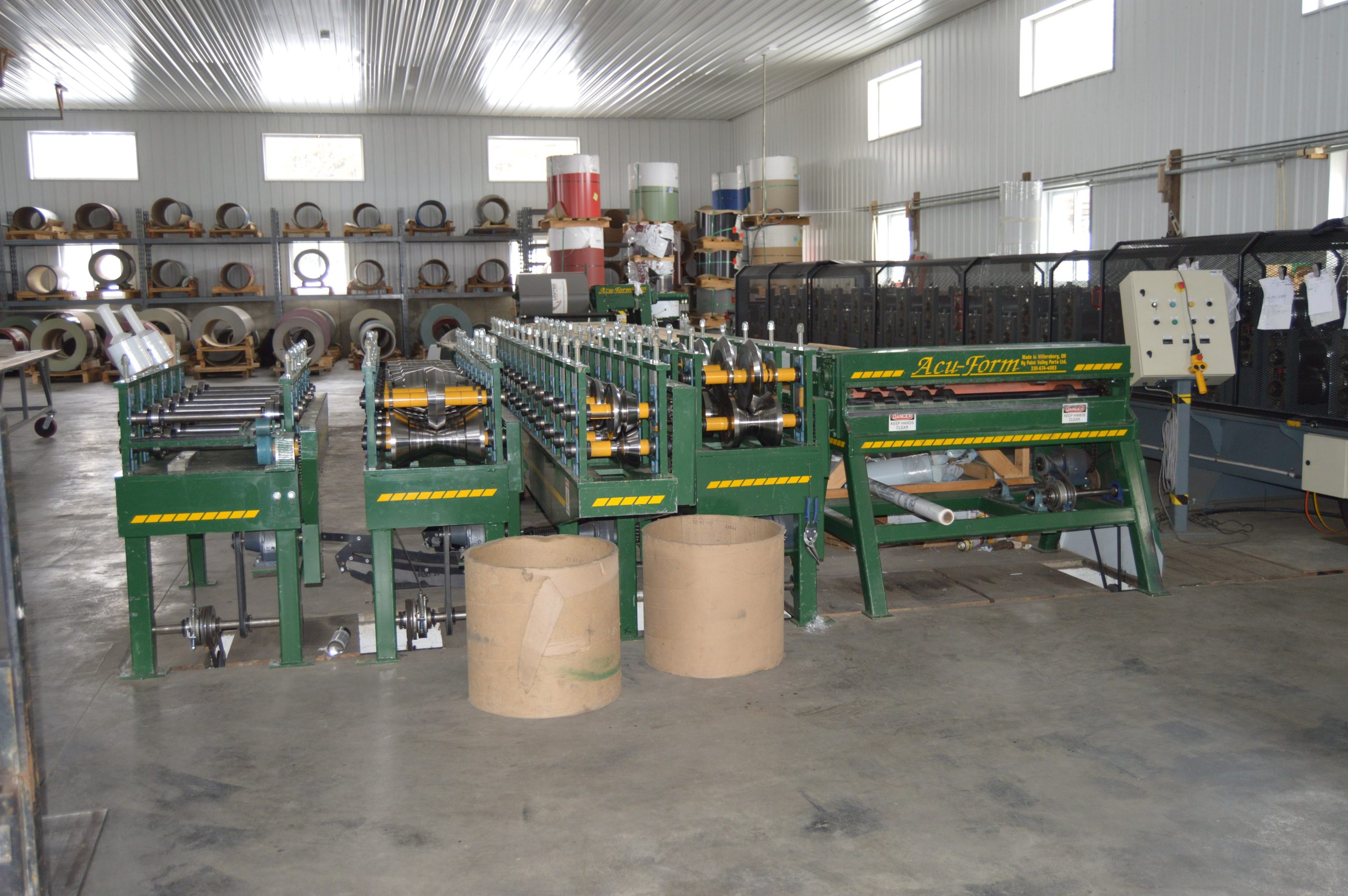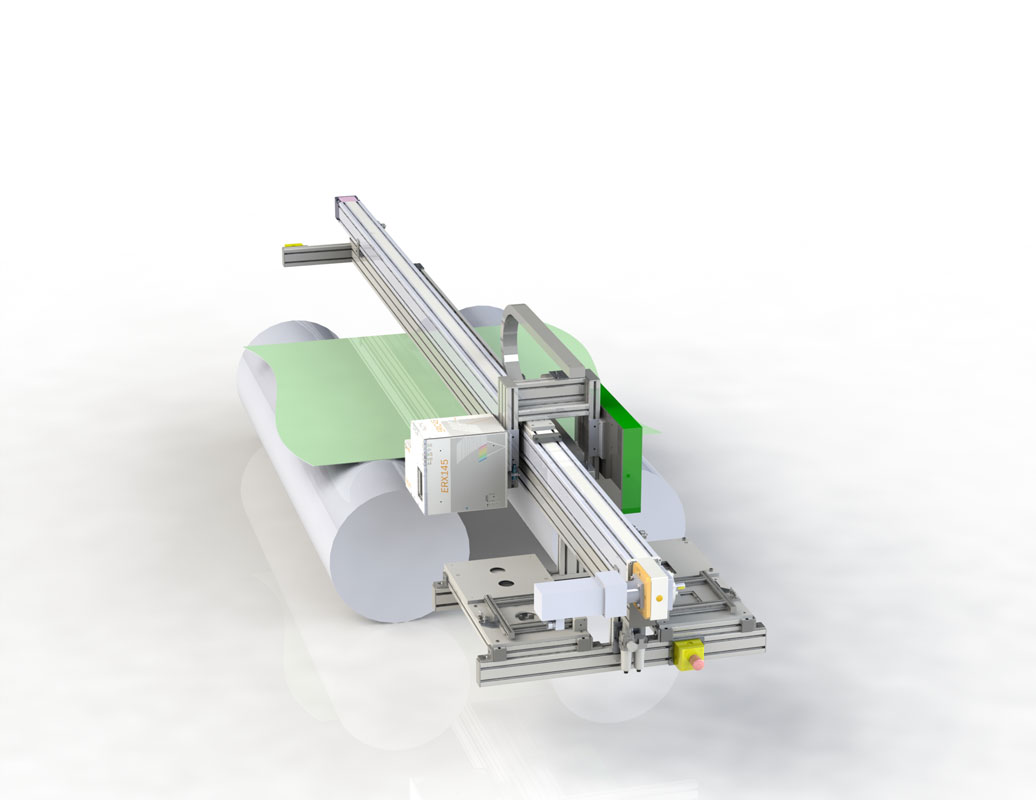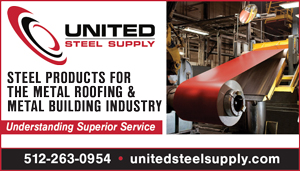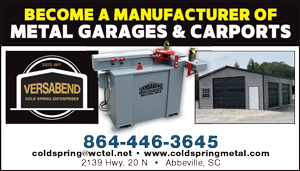By Courtney Glover
When coil steel undergoes roll forming, changes occur within the steel’s characteristics. These changes may be intentional, or problematic, needing to be resolved. Examples include, but are not limited to, material deformation, strain hardening, bowing, camber, and twisting.
Roll forming leads to changes in the shape and dimensions of steel called deformation. The material is stretched and compressed as it pushes through the rollers, altering its overall geometry. Roll forming induces two major types of deformation: transverse bending and lateral deformation. The process also may result in some unwanted longitudinal deformation. Roll forming bends the steel strip multiple times, using sets of rollers. This process will cause plastic deformation within the product. Plastic deformation refers to a change that is not reversible. Roll forming leads to changes in the shape and dimensions of steel called deformation. The material is stretched and compressed as it pushes through the rollers, altering its overall geometry.
Longitudinal and lateral deformations are caused by the roll forming process influencing the orientation of grains within the steel. Grain elongation and alignment may occur along the direction of rolling, affecting the mechanical properties of the material. This can lead to unwanted anisotropic properties, increasing the risk of advanced damage in materials.
Repeated bending and shaping during roll forming results in strain hardening in the steel. What this means is the material becomes harder and stronger due to the deformation that it undergoes. The problematic effect is that this can also result in reduced ductility, causing the steel to become more prone to cracking if it is bent too far.
Residual stress may be introduced in the steel due to uneven deformation and cooling. Though, as Jamie Wolenberg, Senior Manager at the Bradbury Company, points out, this is unusual and unlikely. He states that this would only occur in very aggressive, high-speed applications. This stress may impact the structural integrity and stability of the components. This can be avoided by utilizing proper control of the roll forming process parameters, such as roller pressure and cooling rates.
Another change that occurs during the roll-forming process is the surface finish of the steel. The steel may experience variations in surface roughness or texture due to the roller design and/or surface conditions of the rollers. To help combat this, additional surface treatments such as coating or painting may be used after roll forming. Wolenberg suggests the use of lubrication as another very common way to avoid these issues, particularly on non-aesthetic parts. This will improve the appearance of the steel and will help corrosion resistance.
Dimensional accuracy is found with precise control over the dimensions and tolerances of the formed components. The final product can be negatively impacted by factors such as material properties, roller wear, and process variations. Quality control measures are imperative to ensure that formed components meet the specified dimensional requirements.
Bending Steel
When bending steel, there may be severe undesirable consequences to bending too quickly. Rapid bending can cause stresses in the steel. This happens mostly at sharp corners or areas with high curvature. If the steel is bent too quickly, the steel may not have proper time to deform, causing cracks. These cracks can multiply throughout the material, compromising its structural integrity.
Additionally, when bending steel too aggressively, it may not have enough time to conform to the chosen shape. When this occurs, the material may partially or fully return to its original shape after the bending force is removed. This is known as springback, which can lead to dimensional inaccuracies and inconsistencies in the formed components. Distortion may also occur, especially if the materials are thin or uneven. Deformation of the coil steel can cause unexpected shapes and variations in dimensions. The design of forming dies and tooling can influence springback in coil steel.

Decking roll-forming line from ASC Machine Tools. Courtesy of ASC Machine Tools.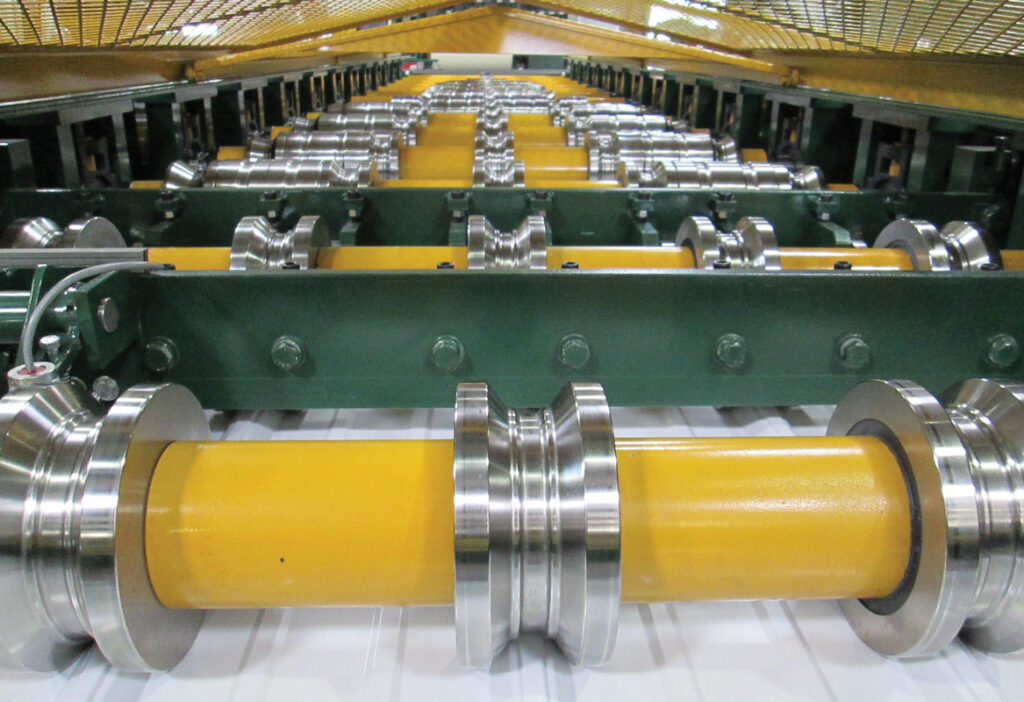
Multiple profiles can be run on this Metal Rollforming Systems machine. Courtesy of Acu-Form.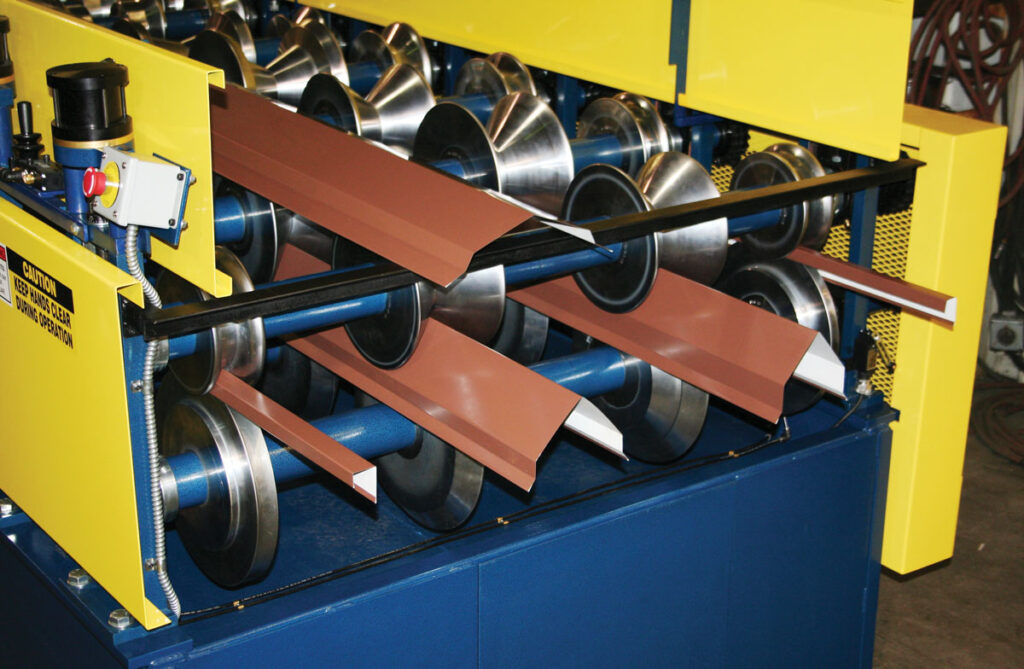
Multiple profiles can be run on this Metal Rollforming Systems machine. Courtesy of MRS.
Optimizing die profiles and surface finishes can help control the deformation and reduce springback. Choosing coil steel with correct mechanical properties and characteristics can also help mitigate springback effects. Materials with higher ductility and lower yield strength are generally less prone to springback.
Rapid deformation may also cause material hardening, surface damage, and/or equipment wear. Increasing the rate of strain hardening in the steel makes it harder and more brittle. Cole Wolford of 3GM Steel explains that this will cause the material to be more likely to crack. This surface damage includes scratches, abrasions, or surface defects. These defects will cause the need for additional finishing or refinishing processes.
Nathan Libbey of Best Buy Metals comments that there are two types of items fabricated from coil steel: panels and trim. If you are looking to roll form either option, bending the material too much or too quickly can fracture paint, or further stress the metal. Lastly, equipment wear puts stress on the bending equipment, including rollers, dies, and press brakes. This can reduce equipment lifespan and increase the need for necessary maintenance.
Wolford also explains that a good way to minimize the risk of cracking steel coatings in roll forming is to use high quality machinery with multiple stands of dies. By doing this, a manufacturer can change the shape of steel in small increments at each stand as the metal goes down the line. Libbey adds that some cheaper systems sacrifice the number of stations to save money. In the end, these systems are too harsh on the product, roughly bending instead of slowly forming. He continues to suggest using the right gauge and softness of metal. A product with tight bends might require a softer metal, especially in heavier gauges.
Libbey also suggests considering the brakes. For hems or other tight bends, consider a bending beam with a tear-drop hem option that allows for a radius instead of a hard brake. Always consider speed when forming harder metal.
To avoid issues caused by distorting steel too quickly, it is essential to control the bending process parameters. These parameters include bending speed, bending force, and rolling die material. Appropriate selection of bending equipment and tooling, along with proper planning and execution of the bending operation, can help prevent damage to coil steel and ensure high-quality formed components.
Coil Steel Bent Too Far
Bending coil steel too far can lead to more potential issues. These issues include cracking, springback, distortion, material fatigue, and surface damage.
Wolford explains that if the coatings of steel are compromised while roll forming or bending the steel on a brake, the finished product can be at risk to show tension, bend staining in the future, or even create adhesion issues for the steel coatings. He continues to say, if the trims or components are bent too far, some bends can be fixed. Libbey says, in some cases slitting or shearing off the affected section and re-bending or reusing for another project is an option. However, at times, it will result in that component being scrapped and recycled.
Repeated excessive bending can induce fatigue in the steel, leading to microcracks and eventual failure under cyclical loading conditions. This is known as material fatigue and is particularly critical when formed components are subjected to dynamic or cyclic loading. Libbey says, while the Galvalume under the paint does allow for some corrosive protection, over bending steel can degrade the integrity of the substrate, paint, and overall roof or wall system.
To avoid these issues caused by bending steel too far, it is essential to be aware of the bending process parameters, including bending radius, bending angle, and material properties. Adhering to recommended bending limits and guidelines, along with proper selection of bending equipment, can help prevent damage to coil steel and ensure the production of high-quality formed components. Conducting thorough testing and bending processes can help identify potential issues and ensure the reliability and durability of formed components.
Defects During Coil Straightening
During coil straightening, the rollers gradually remove the stresses horizontally and vertically from the strip. There are three main types of defects in steel while straightening. These defects are bowing, cambering, and twisting. Bowing is due to the stress in the steel from when it was rolled in coil, cambering is when the strip of steel goes left or right when uncoiled, and twisting is when the coil rotates around the longitudinal axis like a spiral noodle. A straightening fixture goes after the roll former, trying to fix issues such as these.
The common mistakes leading to these errors are excessive pressure on the inboard or outboard side of tooling and asymmetric profiles. This may lead to the steel twisting, cambering, or bowing. To avoid asymmetric profiles, check the entry table to make sure the material is perpendicular to the rolls and ensure the stand is in good working order. While avoiding excessive pressure, gauge the roll form tooling without the material and check the rolls using a mirror to view between each pass. This will ensure that the rolls are matched properly. Then start the material through the first pass and re-gage the rolls. Set the roll gaps based on the actual material thickness you are running.
It is clear that roll forming significantly alters the coil’s mechanical properties, dimensional accuracy, and surface finish. To achieve the desired outcomes and quality, it is essential to have proper understanding and control of the roll-forming process. RF
References:
Cole Wolford, Sales Manager 3GM Steel
Jamie Wolenberg, Senior Manager at the Bradbury Company
Nathan Libbey, Director of IT & Corporate Development at Best Buy Metals
Roll form tooling possible twist causes and remedies. Roll. (2010, August 6). https://www.roll-kraft.com/technical-resources/roll-form-tooling-possible-twist-causes-and-remedies
Wen, B. (2007, April 10). Roll forming high-strength materials. The Fabricators. https://www.thefabricator.com/thefabricator/article/tubepipeproduction/roll-forming-high-strength-materials#Material%20Deformation%20in%20Bending
Wuxi LOTOS Roll Forming. (2022, October 22). ▷ common roll forming problem – roll forming guide ◁. Lotos: Roll Forming Machine. https://lotosforming.com/common-roll-forming-problem/
Courtney Glover is a freelance writer and photographer based in Milwaukee Wisconsin. When not contributing her talents to various publications, Courtney writes YA fiction under the pen name Courtney Christine.


